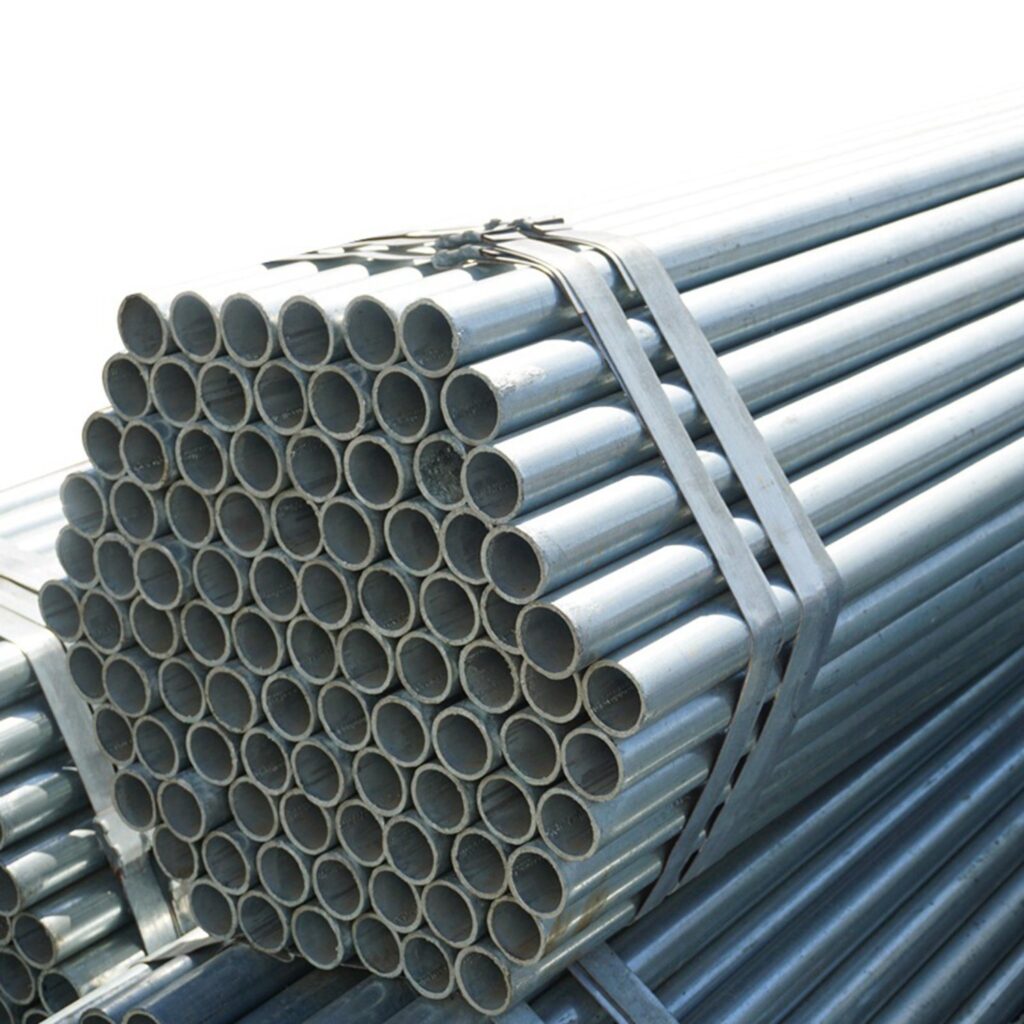As a construction professional, you rely on the stated specifications of building materials to be accurate for planning and safety. However, have you ever purchased a 1 1/2-inch scaffold tube only to discover it does not actually measure 1 1⁄2 inches in diameter? This common occurrence can be frustrating and even dangerous if not properly understood. The reasons behind this misleading labeling come down to manufacturing processes, industry standards, and the complex relationship between a tube’s outer diameter, inner diameter, and thickness. Before purchasing or working with scaffold tubes, you should be aware of how sizing conventions can differ from actual measurements to ensure you choose components suitable and safe for your needs. This article will explain the logic behind scaffold tube sizes so you have the full picture of your work.

The History Behind Scaffold Tube Sizing
What diameter is scaffold tube?
The sizing of scaffold tubes can be misleading. Typical scaffolding dimensions “1 1⁄2 inch” scaffold tube, the actual outside diameter of the tube is closer to 1 3/8 inches. This discrepancy originates from the historical development of scaffold tube sizing.
Originally, scaffold tubes were sized according to their inside diameter. A 1 1⁄2 inch scaffold tube had an inside diameter of 1 1⁄2 inches, with a larger outside diameter required to have that inside measurement while still maintaining adequate wall thickness. Ensuring components like boards, brackets, and fittings could be attached inside the tube was the main objective of this inside dimension.
Over time, the scaffold tube sizing system transitioned to referencing outside diameters instead. However, the naming convention of “1 1⁄2 inch tube” was already ubiquitous. Rather than introduce confusion by relabeling the tube “1 3/8 inch,” the original naming system persisted. The result is a scaffold tube whose name reflects its historical inside diameter, not its actual outside diameter.
This seemingly small difference of 1/8 inch has significant implications for scaffold construction. One must properly size pipework, couplers, brackets, and other fittings to fit the outside diameter of 1 3/8 inches. However, boards and platforms can still be sized to the inside diameter of 1 1⁄2 inches. One must exercise caution to ensure all components are sized and rated properly for the application.
How Scaffold Tubes Are Manufactured
Standard scaffold tube diameter with 1 1⁄2 inch tube does not have a 1 1⁄2 inch diameter. It is important to understand how these tubes are manufactured.
The process of hot rolling is used to make scaffold tubes by heating a long cylindrical billet of steel and passing it through a series of rollers that reduce its diameter and increase its length. The compression of the billet decreases its diameter while the wall thickness remains consistent. The final diameter of the tube is determined by how much the billet is compressed, not its initial diameter.
Tube sizes refer to the nominal bore, not the outside diameter
What does Nominal Bore
The sizes of scaffold tubes refer to their nominal bore. which is the approximate inner diameter of the tube, not the outside diameter.
So a 1 1⁄2 inch tube will have an inner diameter of scaffold tube close to 1 1⁄2 inches, but an outer diameter significantly greater than that to account for the wall thickness. The wall thickness depends on the grade of steel used and the pressures the tube needs to withstand.
Higher grades of steel and increased pressures require thicker tube walls. which results in a larger difference between the inner and outer diameters. For most scaffold tubes, the outer diameter can be 1/4 inch to 3/4 inch greater than the nominal bore. So a 1 1⁄2 inch tube may have an outer diameter closer to 2 inches. The exact measurements can vary between manufacturers and steel grades.
The Difference Between Nominal Pipe Size and Actual Outside Diameter
The nominal pipe size (NPS) refers to the rough commercial sizes that have been adopted for standard pipe and fittings. The actual outside diameter (OD) of a pipe is often larger than its nominal size. This difference occurs because pipe dimensions are specified by a standard for a particular pipe material and schedule (wall thickness).
- Standard Sizing
Most pipe and tube is specified and dimensioned according to a series of long-established standard sizing systems. - Wall Thickness
The wall thickness of a pipe, also known as the pipe schedule, can vary and is specified separately from the nominal pipe size. As the schedule increases, so does the wall thickness. Standard schedules are Schedule 40 and 80 for steel pipe.
The actual measured outside diameter of 1 1⁄2-inch Schedule 40 steel pipe is 1.900 inches. The wall thickness for Schedule 40 pipe is 0.133 inches, giving an inside diameter of 1.634 inches. The nominal size only roughly corresponds to the actual OD, and does not indicate the inner diameter or wall thickness. - Why the Difference?
The historical origin of the difference between nominal pipe size and actual diameter is to provide compatibility between pipes and pipe fittings of the same nominal size, even when their dimensions are not exactly the same. The variation in dimensions also allows for manufacturing tolerances. Nominal sizing also continues for the purpose of compatibility with older pipe systems.
In summary, the nominal pipe size is for identification and compatibility purposes, whereas the actual outside diameter and wall thickness are the dimensions that physically define the pipe. Knowing the difference between these two measurements and standards is important for proper pipe selection and installation.
Why the Size Discrepancy Matters for Construction
When purchasing scaffolding tube, it is important to understand why the stated size of a tube, such as 1 1⁄2 inches, does not correspond to its actual outside diameter. This discrepancy occurs due to manufacturing processes and ensures safe, consistent fittings between tubes and connectors.
- Tube Wall Thickness
Scaffolding tubes are made of steel, which requires a certain thickness to maintain structural integrity under heavy loads. The wall thickness of a tube reduces its internal diameter, so a 1 1⁄2 inch tube may have an outside diameter closer to 2 inches to accommodate a wall thickness of 1⁄4 inch. The wall thickness depends on the tube’s load rating to ensure it can support the required weights. - Fittings and Connectors
Scaffolding systems rely on tight-fitting connectors and clamps to join tubes together securely. If tubes had an outside diameter exactly matching their stated size, these fittings would not fit properly. The additional diameter provided by the wall thickness gives fittings more surface area to grip onto, preventing instability.
- Industry Standards
Manufacturing scaffolding tubes to standard outside diameters allows for interoperability between components from different makers. This standardization benefits end users by providing more flexibility and compatibility in scaffolding systems. Although the stated size of a tube may differ from its measurements, the predictable variation gives scaffolding a universal usefulness for construction and industrial purposes.
Conclusion
By understanding the key reasons why a 1 1/2 inch scaffold tube does not actually measure 1 1/2 inches in diameter, you now have valuable insight into the scaffolding industry and manufacturing processes. While it may seem counterintuitive or misleading at first, the dimensional standards and tolerances in place have important reasons and purposes. Appreciating these nuances will make you a more informed consumer and help set proper expectations when purchasing or working with scaffolding materials. Though a small detail, it illustrates how even the most seemingly straightforward parts of an industry can have layers of complexity not visible from the outside. With this newfound knowledge in hand, you can approach your next worksite or scaffolding project with more confidence and expertise.
